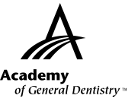|
Exercise No. 325
Subject Code: 738
Case Presentations
The 15 questions for this exercise are based on the article, "Dental findings in a child with chronic renal failure secondary to cystinosis", on pages 16-17. This exercise was developed by Merlin P. Ohmer, DDS, FAGD, in association with the General Dentistry Self-Instruction committee.
|
Reading the article and answering the questions will enable you to:
- understand the relationship between renal disease and dental abnormalities;
- gain a better understanding of cystinosis; and
- understand dental developmental abnormalities.
|

